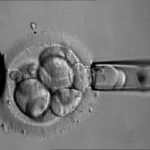Infertility Treatments
Preimplantation Genetic Testing

In this five part series preimplantation genetic testing is defined and the categories of genetic disorders that preimplantation genetic testing may identify are described.
Preimplantation genetic testing for diagnosis is referred to as PGD and is used to identify specific chromosomal or genetic defects in embryos created though in vitro fertilization (IVF) and intracytoplasmic sperm injection (ICSI) before transferring them into the uterus. Preimplantation genetic screening or PGS is used to screen embryos for all 23 pairs of chromosomes. PGD and PGS allows for transfer of only unaffected, chromosomally normal embryos to the uterus for implantation which will reduce the risk of having an unhealthy baby. PGD/PGS thus provides an alternative to current post-conception diagnostic procedures like amniocentesis or chorionic villus sampling obviating pregnancy termination should an abnormality be detected.
There are three major categories of genetic disorders that PGD/PGS may identify. These include: 1) identification of a specific single gene defect; 2) diagnosis of a specific chromosomal abnormality such as when one partner has a balanced reciprocal translocation or a Robertsonian translocation; and 3) aneuploidy screening for any chromosome abnormality.
Transferring genetically normal embryos into the uterus should increase the chance for a successful and healthy pregnancy by greatly reducing the risk of adverse pregnancy outcomes such as miscarriage, pregnancy termination following prenatal diagnostic testing, and birth defects due to either single gene or chromosome abnormalities.


